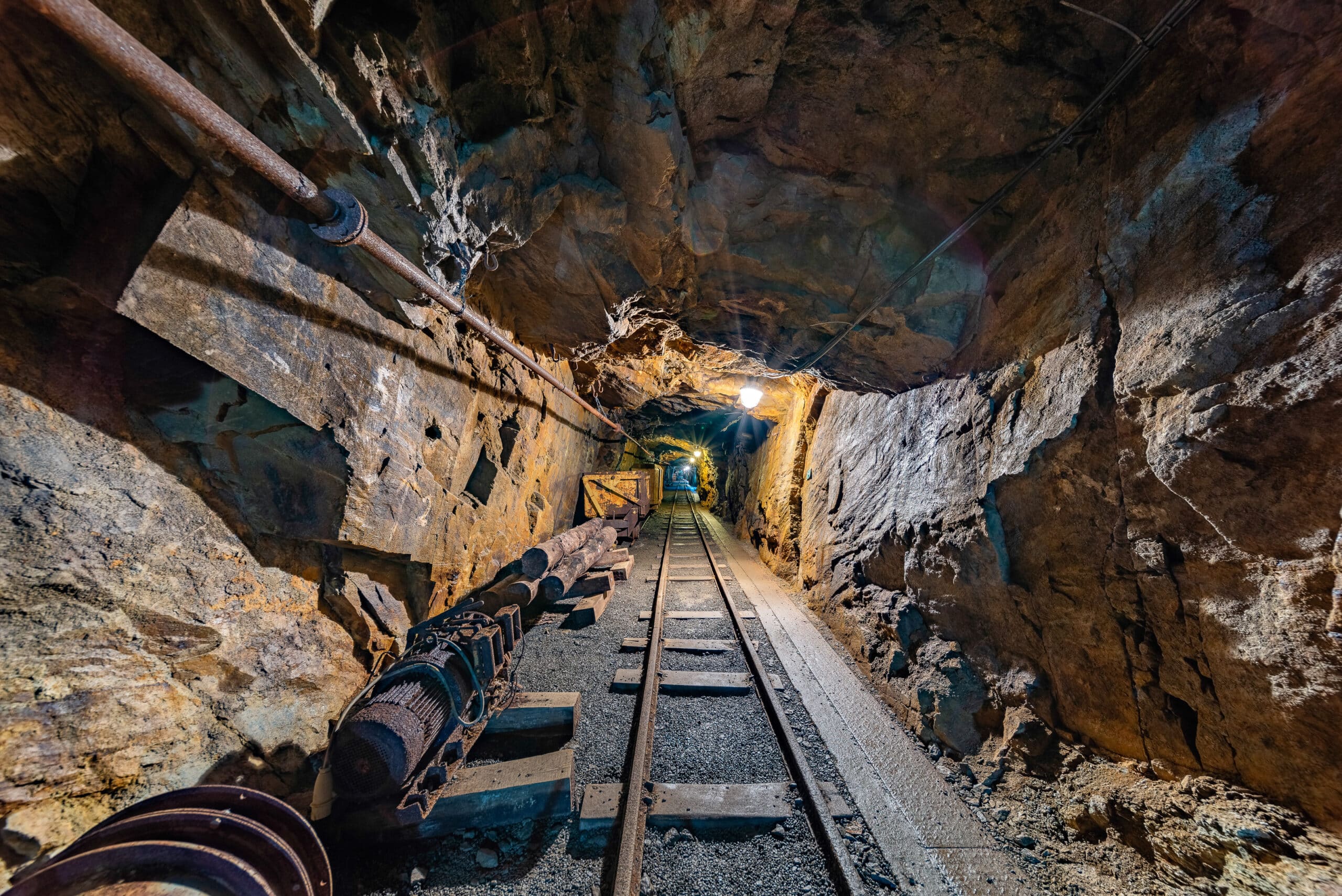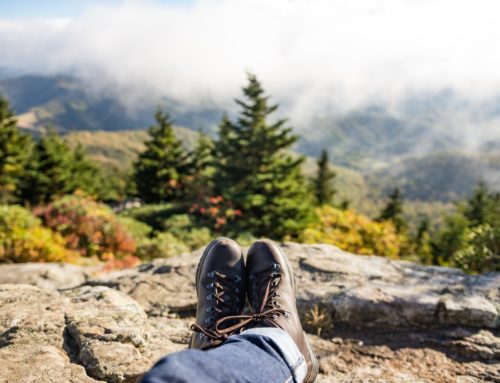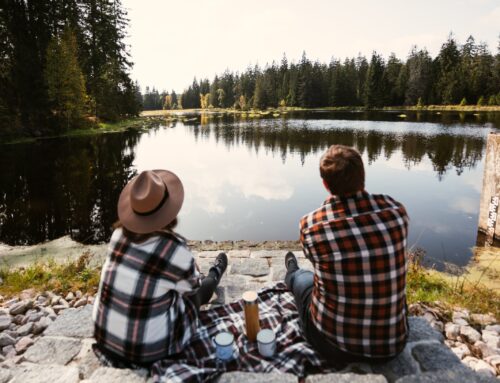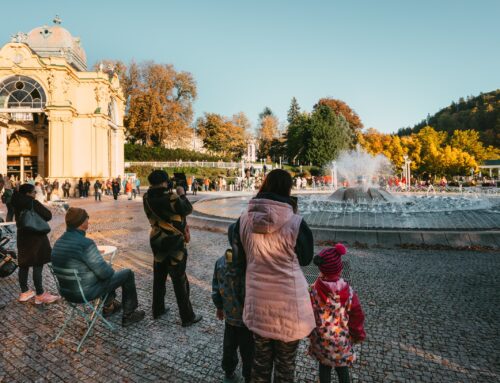It is no secret that the Erzgebirge (Ore Mountains) is renowned far and wide for its hiking trails. But did you know that your steps don’t have to go only to Klínovec, Boží Dar or Jáchymov? Everybody goes to the mountains, but only a few people go “under the mountains”. So put on your safety helmet and boots and “up” to the underground. The summer season has begun!
In the Karlovy Vary Region you can find several mining monuments where iron, tin or copper ores were mined. Some of them are even so important that they can be found on the UNESCO list. You may not have known that the Erzgebirge is interwoven with hundreds of kilometres of mine tunnels, which are sometimes more than 500 years old. These medieval mine workings traditionally serve as a wintering ground for bats during autumn and winter. But they’re gone now, so we invite you to explore the most interesting ones.

Johannes adit
You can start your tour of the underground gems of the Erzgebirge/Krušnohoří Mining Cultural Landscape, a UNESCO World Heritage Site, at Boží Dar. Here you will find the Zlatý Kopec skarn district and its largest mine, the Johannes Mine.
Even before the listing, the mine was a popular destination for geology enthusiasts and adrenaline junkies. Essential equipment for any visitor is a helmet, flashlight, boots, cloak, gloves and also courage. Don’t worry, everything will be loaned to you on site (except the courage). In fact, when you visit, you can climb a forty-meter ladder or crawl in a corridor only forty-five centimeters narrow. The reward for this effort will be a glimpse into five hundred years of mining history during the two and a half hour tour.
The uniqueness of this place is underlined by the way it is currently maintained. Everything is done as it was then – only wood is used to reinforce the corridors. You would look in vain for concrete and similar modern conveniences. You can explore the gallery in two tours. You can choose between the basic tour and the grand tour. Children under the age of 10 are not allowed in the tunnel.
Before visiting the Johannes adit, it is necessary to make a reservation and purchase a ticket in cash at the Boží Dar information centre or by online payment in the booking system on the website.


Adit No. 1
Probably the most famous and historically darkest place in the region is Jáchymov. Already in the 16th century it was famous for silver mining and also for minting silver coins – thalers. In addition to silver, the local mines also produced lead, arsenic, tin and, last but not least, pitchblende, in which the Curies discovered polonium and radium. The second half of the 20th century is associated with uranium mining in Jáchymov. The mining of silver and uranium ores in the town is commemorated by the area of Adit No. 1 and the neighbouring Svornost mine. It is the oldest mine still in use in Europe. Today it serves as a source of therapeutic radon waters for the spa, which made Jáchymov famous all over the world.
In Adit No. 1 you will find the Jáchymov Mining Museum. The 260-metre-long adit reminds not only of the way minerals were extracted in the last century, but also of the suffering of political prisoners – tormentors (men destined for liquidation), who were forced to work and live here in completely unsatisfactory conditions (lack of food, poor equipment, no protection against radiation, no medical care, etc.). It is believed that by 1961 some 65 000 people had experienced the misery of life in the camps. In less than 15 years of mining, 7 940 tonnes of uranium were extracted and 1 102.9 km of tunnels were dug.
In 2008, Adit No. 1 was opened to the public. You can see examples of different types of reinforcement, mining carts and mining techniques. The exhibition is complemented by finds that were discovered in the area of the original silver and later uranium mine. In the adit, you will see, for example, two cages (bars) that were used to confine prisoners underground, or objects that were found in the premises of the Svornost camp (camp chimneys, lamp shades, etc.). The restored Mauthausen stairs, where the prisoners used to walk, the guard towers and the facilities of the complex, which are in a replica of the former camp house, also add to the atmosphere of the camp. The 8.5 km long Jáchymov Hell nature trail runs along the mining museum at Adit No. 1.
During the holidays, it is necessary to book a tour by phone. Full information about opening times and admission prices can be found here.

Mauritius Mine
We continue on according to the UNESCO list. Just a few kilometres from Jáchymov is a tin deposit near Hřebečná, today’s part of Abertamy. In one of the richest tin deposits in the Czech part of the Ore Mountains, almost within sight of the photogenic sinkhole of the Červená jáma (Red Pit) mine, you will find the entrance to the old Mauritius tin mine. The sightseeing adit Kryštof is open to the public.
But now for the tour itself. Helmets, flashlights, boots and raincoats are available for rent in the service house of the Kryštof adit. It takes about an hour to explore the narrow corridors and vast spaces at a temperature of seven degrees Celsius. This gives you plenty of time to create images in your mind of people using primitive tools to cut tunnels in the hard granite and mine tin ore.
The Kristof Adit is accessible by a 13-metre high metal staircase built into the Mauritius Mine pit. The actual tour route in the tunnel is more than 400 metres long and includes a total of 11 stops. Along the way, you will see sections stamped by hand using a handcuff and a hammer, lots enlarged by fire setting, as well as several short diversions, excavations and overhead passages, and you will also encounter miners’ dummies in period costume. The main attraction of the whole route is the huge underground chamber at the end of the adit – a quarry 65 metres long, 4 – 9 metres wide and an average height of 15, but sometimes 25 metres. This is one metre more than the tower on Klínovec, for example. The tour of the chamber includes an impressive audiovisual projection.
The tour must be booked in advance on the website or in person at the Abertamy Information Centre. Payment for the tours is made directly at the mine, in cash only.


Jeroným Mine
The Jeroným Mine in Čistá near Rovná, a national cultural monument, is a unique witness of the mining culture and skills of our predecessors. Although the mine is not a UNESCO World Heritage Site, it is attracting more and more visitors from all over the world.
The building catches the eye at first sight. The architect has designed it so that, thanks to the grassy roof and the facade made of stone and wood, it will certainly fit into the landscape of the Slavkov Forest. The Sokolov Museum, which manages the national cultural monument, has so far prepared a nearly 200-metre-long tour route underground. It runs at a depth of 30 to 50 metres and visitors stumbling around with a helmet on their head and a torch should pay particular attention to the walls of the passages.
According to estimates, the Jeroným mine has provided about 500-700 tonnes of tin throughout its history. It was therefore never as rich and famous as other mines in the area, but it has been preserved in its original form. In the central part of the mine there are impressive 16th-century chambers. On the walls of the tunnels you can clearly see the striations that miners used to mine tin here by hand with handcuffs and hammers five hundred years ago. In many places, the walls and ceilings are blackened by soot that has settled here as a result of the method of fire setting used.
The mine is currently undergoing extensive and costly reconstruction. The Jeroným mine is gradually opening up other parts of the old mine (II and III), which involves cleaning and partially breaking through some of the connecting passages to create a new route. This will practically triple the length of the current visitor route.
All information about the Jeroným mine can be found on the website.
The Ore Mountains offer countless natural beauties, interesting tourist destinations and sights. Now you know that not only on the surface, but also under the surface, where not everyone will discover them. In short, the real treasures are hidden deep underground!





